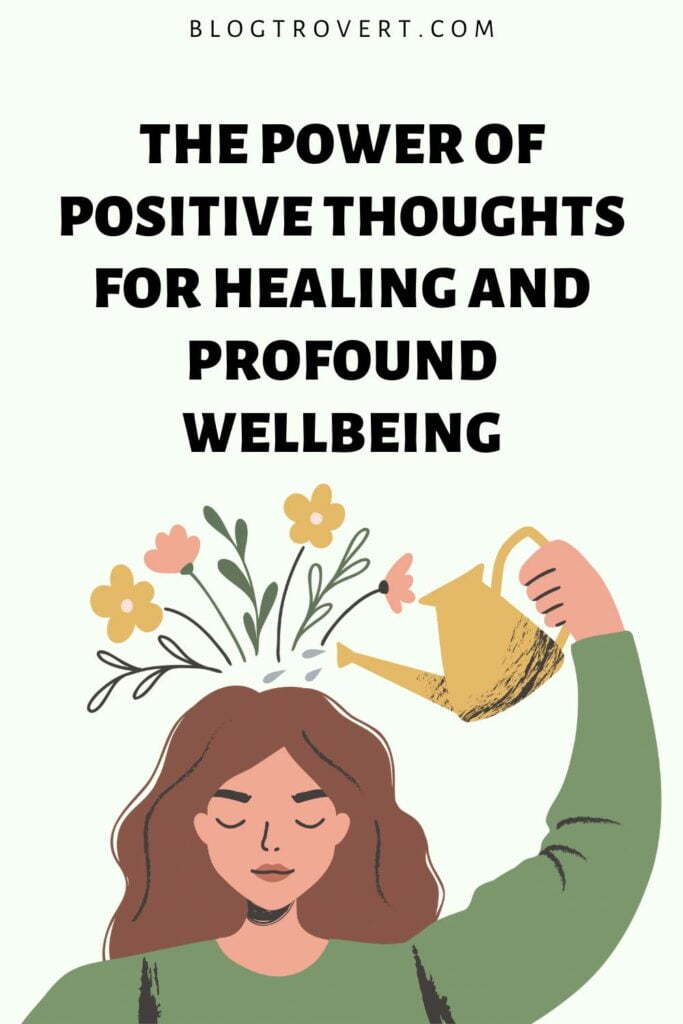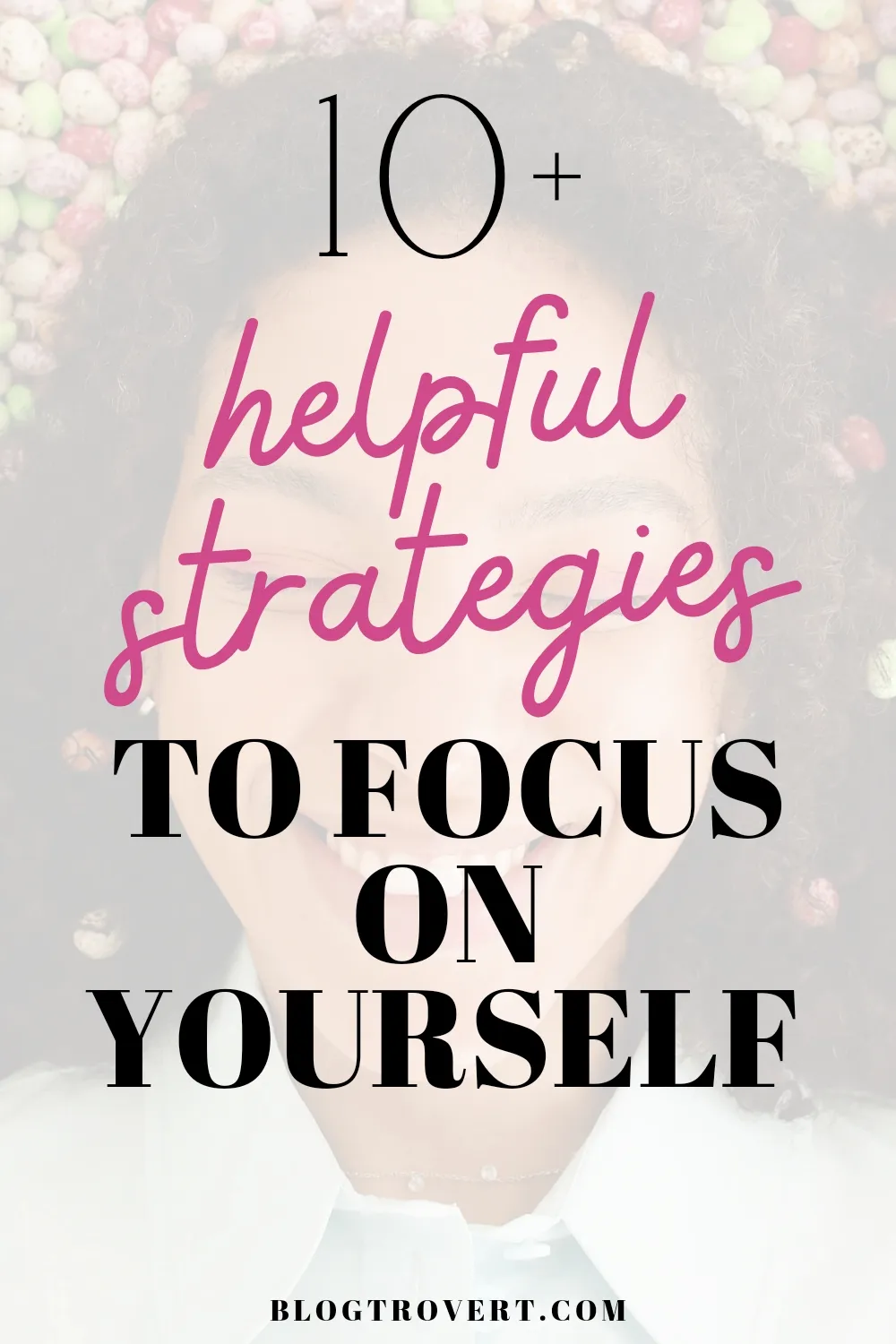In the journey towards healing and well-being, the power of Positive thoughts for healing often goes unnoticed. However, studies have shown that cultivating a positive mindset can have profound effects on both our physical and emotional health.

In this comprehensive guide, we will delve into the intricate relationship between positive thoughts and the healing process, exploring the scientific evidence and practical techniques that can aid in our journey towards holistic wellness.
Understanding the Healing Process
The healing process is a complex interplay of physical, emotional, and psychological components. It involves not only the mending of physical wounds but also the restoration of harmony within ourselves. Understanding the intricate nature of healing helps us to appreciate how positive thoughts play a pivotal role in expediting the recovery process.
Unleashing the Positive thoughts for healing
Positive thoughts for healing act as catalysts, influencing the healing process on multiple levels. They can enhance our immune system, reduce stress, and promote overall well-being. By embracing a positive mindset, we can tap into the innate healing capacities of our body and mind.
Scientific Evidence: Bridging the Gap between Positive Thinking and Healing
Many scientific studies have substantiated the profound impact of positive thinking on the healing process. Researchers have found that individuals with optimistic outlooks have better recovery rates and improved overall health outcomes. These findings further emphasize the importance of harnessing the power of positive thoughts in our healing journey.
The Mind-Body Connection in Healing
The connection between the mind and body is intrinsic, and they constantly communicate and influence each other. This connection forms the foundation of the mind-body approach to healing.

When we recognize the influence of our thoughts on our physical well-being, we can actively engage in practices that promote healing and rejuvenation.
The Physiological Impact of Positive Thoughts
Positive thoughts for healing have the remarkable ability to elicit beneficial physiological responses within our bodies. They can reduce inflammation, boost the release of endorphins, and even regulate blood pressure. Understanding these physiological mechanisms sheds light on the transformative power of positive thinking.
Mind-Body Practices: A Path to Healing
Mind-body practices, such as meditation, deep breathing exercises, and yoga, provide powerful tools for promoting healing through positive thoughts. These practices help us cultivate mindfulness, reduce stress, and enhance the mind-body connection. Incorporating these techniques into our daily lives helps amplify the healing potential of positive thinking.
The Power of Optimism in Healing
Optimism serves as a beacon of hope in the healing process. It enables us to maintain a positive outlook, even in the face of adversity. Studies have linked an optimistic mindset to improved immune function, faster recovery times, and increased resilience. By embracing optimism, we can harness its transformative power for our own healing journey.
Positive Thoughts for Healing
Our beliefs and thoughts profoundly influence how our bodies respond to illness. Positive thoughts create a conducive environment for healing by reducing stress, promoting relaxation, and enhancing the body’s natural healing mechanisms. Understanding this mind-body connection empowers us to take part in our healing process.
Techniques for Cultivating Optimism
Cultivating optimism requires conscious effort and practice. Engaging in activities such as gratitude journaling, positive self-talk, and reframing negative situations can shift our perspective towards a more positive outlook. These techniques help us overcome challenges, maintain motivation, and foster a resilient mindset throughout our healing journey.
Overcoming Negative Thought Patterns for Healing
Negative thought patterns can hinder our healing progress, perpetuating stress, anxiety, and self-doubt. It is crucial to develop self-awareness and recognize these patterns in order to break free from their grip. By actively challenging negative thoughts, we can pave the way for a more positive and healing-oriented mindset.
The Impact of Negative Thoughts on the Healing Process
Negative thoughts create a state of disharmony within our minds and bodies, inhibiting the natural healing processes. They can exacerbate pain, impede recovery, and compromise emotional well-being. We can create a fertile ground for healing and transformation if we address and transform these negative patterns.
Strategies for Reframing Negative Thoughts
Reframing negative thoughts is a powerful tool for promoting positivity and healing. Consciously challenging negative interpretations and seeking alternative perspectives can help shift our focus towards constructive and empowering thoughts. This process allows us to reframe challenges as opportunities for growth and resilience.
Harnessing the Power of Affirmations for Healing
Affirmations are powerful statements that reinforce positive beliefs and thoughts. Using carefully crafted affirmations can direct our subconscious mind towards healing and well-being. Affirmations serve as daily reminders of our inherent capacity for healing and transformation.
Personalized Affirmations: Nurturing Specific Health Goals
Tailoring affirmations to address specific health conditions or goals enhances their effectiveness. By identifying our unique needs and desires, we can create personalized affirmations that resonate deeply within us. These affirmations serve as guiding lights, illuminating the path towards healing and well-being.
Incorporating Affirmations into Daily Routines
Consistency is key when it comes to harnessing the power of affirmations. Incorporating affirmations into our daily routines, such as morning rituals, meditation practices, or bedtime reflections, helps us to reinforce positive thinking and cultivate a resilient mindset. Affirmations become an integral part of our healing journey.
Visualization Techniques for Healing
Visualization is a potent technique that harnesses the imagination to create healing imagery. We can stimulate the mind-body connection and initiate the healing process when we vividly imagine desired outcomes and positive scenarios. Visualization serves as a powerful ally in promoting relaxation, pain management, and overall well-being.
Step-by-Step Guide to Visualization for Healing
To harness the full potential of visualization, a systematic approach is beneficial. Here is a step-by-step guide to using visualization for healing:
- Find a Quiet and Comfortable Space: Begin by finding a quiet and comfortable space where you can relax without distractions. This could be a peaceful corner of your home, a serene outdoor setting, or any place where you feel at ease.
- Settle into a Relaxed State: Take a few moments to settle into a relaxed state. Close your eyes, take deep breaths, and let go of any tension in your body. Allow yourself to fully embrace the present moment and create a sense of calm within.
- Choose a Healing Goal: Identify a specific healing goal or intention that you would like to focus on during your visualization practice. It could be physical healing, emotional well-being, pain relief, or any other aspect of your health and well-being that requires attention.
- Create a Vivid Mental Image: Visualize the desired outcome or state of being related to your healing goal. Engage all your senses to create a vivid mental image of this state. See the colors, shapes, and details in your mind’s eye. Hear the sounds associated with your healing, whether it’s the soothing melody of nature or affirming words of encouragement. Feel the sensations of well-being, comfort, and healing in your body. Immerse yourself in this mental image and make it as real and tangible as possible.
- Engage Emotions: As you continue to visualize, engage your emotions and allow yourself to feel the positive emotions associated with your healing goal. Whether it’s joy, gratitude, peace, or hope, let these emotions fill your being and amplify the healing energy within you.
- Focus on Breath and Relaxation: Throughout the visualization practice, maintain a focus on your breath. Breathe deeply and rhythmically, allowing each breath to further relax your body and deepen your state of relaxation. Release any tension or resistance you may be holding onto, allowing your body to become fully receptive to healing.
- Revisit the Visualization Regularly: Consistency is key when it comes to visualization for healing. Set aside dedicated time each day to revisit your visualization practice. You can start with shorter sessions and gradually increase the duration as you become more comfortable. Repeating the visualization regularly helps reinforce positive thoughts and anchors the healing process in your mind and body.
- Express Gratitude: After completing your visualization, take a moment to express gratitude for the healing that is taking place within you. Cultivate a sense of appreciation for the progress you have made and the potential for further healing and well-being.
This step-by-step guide empowers us to utilize visualization as a powerful tool for healing. Remember, visualization is a deeply personal practice, and there is no right or wrong way to do it.
Trust your intuition and adapt the visualization technique to suit your needs and preferences. With regular practice, visualization can become a powerful tool for promoting relaxation, pain management, and overall well-being on your healing journey.
Visualization Exercises: Nurturing Relaxation and Well-being
Visualization exercises are powerful tools that can nurture relaxation and well-being by harnessing the power of our imagination. These exercises allow us to create vivid mental images that evoke positive emotions, reduce stress, and promote a sense of calm.
Engaging in visualization allows us to tap into our mind’s ability to influence our body’s responses, ultimately enhancing our overall well-being. Here are some visualization exercises to nurture relaxation and well-being:
Nature Retreat Visualization
Look for a peaceful and cozy spot where no one can disturb you.. Close your eyes and take a few deep breaths to relax your body and mind. Now, imagine yourself in a serene natural setting of your choice – a beach, a forest, or a peaceful garden.
Visualize the details of this place – the colors, textures, sounds, and scents. Engage your senses fully in this visualization. Imagine feeling the warmth of the sun, the gentle breeze on your skin, and the soothing sounds of nature.
Allow yourself to immerse in this tranquil environment, experiencing a deep sense of relaxation and rejuvenation.
Inner Sanctuary Visualization
Imagine creating your own inner sanctuary – a safe and peaceful place within your mind where you can retreat whenever you need a moment of calm. Visualize this sanctuary, whether it’s a cozy room, a garden, or any other space that feels comforting to you.
Picture the details – the furniture, the colors, and the objects that bring you joy and tranquility. Engage your senses as you explore this sanctuary, noticing the textures, scents, and sounds. Imagine spending time in this inner sanctuary whenever you need to recharge and find inner peace. Allow the visualization to bring you a deep sense of relaxation and well-being.
Healing Light Visualization
Sit or lie down in a comfortable position and close your eyes. Take a few deep breaths to center yourself. Now, visualize a radiant and healing light surrounding your body. See this light as a warm and comforting energy that envelops you, bringing deep relaxation and healing.
Imagine the light gradually permeating every cell of your body, dissolving any tension or discomfort. Visualize the healing light infusing your body with vitality, restoring balance and promoting well-being. Stay with this visualization for a few moments, basking in the soothing energy of the healing light.
Gratitude Visualization
Find a peaceful space where you can sit comfortably. Take a few deep breaths and allow your body to relax. Now, visualize a golden light in front of you. With each inhale, imagine this light growing brighter and more radiant. With each exhale, send feelings of gratitude towards the light.
Visualize the light expanding, enveloping you in a warm glow of gratitude and appreciation. Bring to mind specific things or people you are grateful for, and let this feeling of gratitude fill your entire being. Stay in this visualization, bathing in the warmth of gratitude and allowing it to nurture your well-being.
Future Self Visualization
Close your eyes and take a few deep breaths to calm your mind. Now, imagine yourself in the future, fully healed, and living a life of well-being and fulfillment. Visualize the details of this future self—the vibrant health, the joy, and the accomplishments. See yourself engaged in activities that bring you happiness and fulfillment.
Engage your senses as you immerse yourself in this visualization, feeling the emotions of success, contentment, and gratitude. Allow this visualization to inspire and motivate you on your healing journey, knowing that this positive future is within your reach.
Remember, visualization exercises are most effective when practiced regularly and with focused attention. As you engage in these exercises, allow yourself to fully experience the sensations, emotions, and imagery.
By nurturing relaxation and well-being through visualization, you are harnessing the power of your mind to create a positive and healing state of being.
The Role of Gratitude in Healing
Gratitude serves as a profound catalyst for healing, redirecting our focus towards positive experiences and fostering resilience. Cultivating gratitude helps us to shift our perspective from what is lacking to what is abundant in our lives. This shift has a profound impact on our overall well-being and healing journey.
Practicing Gratitude: Shifting Perspective, Expanding Joy
Practicing gratitude is a simple yet transformative endeavor. By incorporating gratitude rituals, such as gratitude journaling or expressing appreciation to others, we train our minds to acknowledge the blessings in our lives. Gratitude becomes a powerful lens through which we perceive the world.
Incorporating Gratitude Rituals into Daily Life
Incorporating gratitude rituals into our daily lives infuses our healing journey with positivity and appreciation. Setting aside dedicated moments for gratitude, such as morning reflections or evening gratitude meditations, helps us create a space to acknowledge the blessings, both big and small, that surround us. These rituals become anchors, grounding us in the present moment and nurturing our overall well-being.
Mindfulness and Present-Moment Awareness for Healing
Mindfulness is the art of being fully present, free from judgment and attachment. Cultivating present-moment awareness allows us to anchor ourselves in the healing journey, fostering a deep sense of acceptance and inner peace. Mindfulness serves as a powerful tool for reducing stress, enhancing self-awareness, and promoting overall well-being.
Practicing Mindfulness: Reducing Stress, Cultivating Resilience
Incorporating mindfulness practices into our daily lives enhances our ability to manage stress and adversity. Engaging in activities such as mindful breathing, body scans, or mindful movement helps us develop resilience, regulate our emotions, and maintain a positive mindset. Mindfulness becomes a sanctuary amidst the challenges of the healing journey.
Techniques for Incorporating Mindfulness into Daily Life
Integrating mindfulness into our daily routines requires intention and commitment. Here are some techniques to help incorporate mindfulness into your everyday life:
- Mindful Breathing: Take a few moments throughout the day to bring your attention to your breath. Observe the sensation of the breath as it enters and leaves your body, without trying to control it. This simple practice can help anchor you in the present moment and bring a sense of calm.
- Mindful Eating: Before eating a meal, take a moment to appreciate the food in front of you. Notice its colors, textures, and smells. As you eat, savor each bite, chewing slowly and fully experiencing the taste and nourishment of the food. Eating mindfully enhances the connection between body and mind, fostering a sense of gratitude and enjoyment.
- Mindful Walking: During your walks or daily commute, bring your attention to the sensations of walking. Feel the ground beneath your feet, the movement of your body, and the surrounding environment. Engage your senses fully, observing the sights, sounds, and smells. Walking mindfully can help anchor you in the present moment and cultivate a sense of gratitude for the simple act of movement.
- Mindful Pause: Throughout the day, take short mindful checks in with yourself. Close your eyes, take a few deep breaths, and bring your awareness to your body and emotions. Notice any tension or stress and allow yourself to let go of it. This practice can help you reset and recenter, promoting a sense of calm and well-being.
- Mindful Technology Use: In our technology-driven world, it’s important to be mindful of our digital consumption. Set boundaries and allocate specific times for using technology. When engaged with screens, practice mindful awareness of your posture, breathing, and the impact of digital media on your thoughts and emotions. Being mindful of technology use can help cultivate a healthier relationship with digital devices and promote better balance in life.
Remember, mindfulness is a skill that you can develop with practice. Start with small, manageable moments of mindfulness throughout the day and gradually expand the duration and frequency of your practice.
As you continue to incorporate mindfulness into your daily life, you will experience its transformative effects on your healing journey and overall well-being.
Positive Thoughts and Emotional Healing
Emotional healing is a crucial aspect of the overall healing process. Positive thoughts play a vital role in facilitating emotional healing by fostering self-compassion, promoting forgiveness, and encouraging self-expression. Cultivating a positive mindset creates a nurturing space for emotional growth and transformation.
Techniques for Managing and Processing Emotions
Managing and processing emotions is essential for emotional healing. By engaging in practices such as journaling, expressive arts, or seeking professional support, we gain tools to navigate the complexities of our emotions. These techniques allow us to release emotional burdens, heal past wounds, and cultivate emotional well-being.
The Role of Self-Compassion and Forgiveness in Emotional Healing
Self-compassion and forgiveness form pillars of emotional healing. By offering ourselves kindness, understanding, and forgiveness, we create an environment of love and acceptance. Self-compassion and forgiveness pave the way for emotional healing, liberating us from the weight of resentment, guilt, and self-judgment.
Cultivating Resilience and Strength through Positive Thinking
Resilience is the ability to bounce back from adversity and navigate challenges with strength and grace. Positive thoughts and mindset serve as building blocks for resilience, empowering us to overcome setbacks and persevere in the face of obstacles. By nurturing a positive outlook, we foster resilience and inner strength.
Overcoming Challenges and Setbacks in the Healing Journey
Challenges and setbacks are inherent in the healing journey. However, with a positive mindset, we can transform these obstacles into opportunities for growth and learning. By reframing challenges, seeking support, and embracing a growth-oriented mindset, we navigate the bumps along the path with resilience and determination.
Strategies for Maintaining a Positive Outlook
Maintaining a positive outlook requires ongoing commitment and practice. By engaging in self-reflection, focusing on gratitude, and cultivating self-care practices, we nourish our positive mindset. These strategies become anchors that help us maintain a positive outlook, even in the face of adversity.
The Journey of Healing: Celebrating Progress and Embracing Self-Compassion
Significant milestones and achievements mark your healing journey. By recognizing and celebrating these moments, we cultivate a sense of accomplishment and motivation. Acknowledging our progress reminds us of the transformative power of positive thoughts and serves as a testament to our resilience and inner strength.
Practicing Self-Compassion and Self-Kindness during the Healing Process
Self-compassion and self-kindness are essential components of the healing journey. By treating ourselves with kindness, understanding, and patience, we create a nurturing environment for healing and growth. Embracing self-compassion allows us to navigate setbacks and challenges with grace and gentleness, fostering a positive and empowering mindset.
Fostering a Positive Mindset for Long-Term Well-being and Continued Healing
Fostering a positive mindset extends beyond the healing journey itself. By integrating positive thoughts and practices into our daily lives, we lay the foundation for long-term well-being and continued healing. Cultivating positivity becomes a lifelong commitment, empowering us to embrace the transformative potential of positive thinking in all aspects of our lives.
Supporting Healing through Positive Lifestyle Choices
Positive lifestyle choices, such as nutrition, exercise, and sleep, profoundly impact our healing and overall well-being. By nourishing our bodies with wholesome foods, engaging in regular physical activity, and prioritizing restorative sleep, we create an optimal environment for healing and vitality. Positive thoughts are further amplified by these supportive lifestyle choices.
Strategies for Adopting Positive Lifestyle Habits
Adopting positive lifestyle habits requires commitment and intention. By setting achievable goals, seeking professional guidance, and incorporating small changes into our daily routines, we gradually transform our lifestyle. These strategies empower us to make sustainable positive choices that enhance our healing journey and promote long-term well-being.
Creating a Holistic Approach to Healing through Positive Thoughts and Healthy Choices
A holistic approach to healing recognizes the interconnectedness of our physical, emotional, and mental well-being. By embracing positive thoughts and integrating healthy lifestyle choices, we create a synergistic effect that optimizes our healing potential. This holistic approach nurtures our overall well-being and encourages a balanced and fulfilling life.
The Continued Practice of Positive Thinking for Lifelong Healing
Positive thinking is not a short-term endeavor but a lifelong practice. It requires ongoing commitment, self-reflection, and adaptation. By embracing the continued practice of positive thinking, we embed it into the fabric of our lives, promoting lifelong healing, growth, and transformation.
Strategies for Maintaining a Positive Mindset beyond the Healing Journey
Maintaining a positive mindset beyond the healing journey necessitates conscious effort. By engaging in regular self-reflection, surrounding ourselves with positive influences, and incorporating daily practices that foster positivity, we sustain our positive outlook. These strategies support us in navigating life’s challenges and maintaining our overall well-being.
Inspiring Quotes and Final Thoughts on the Power of Positive Thoughts for Healing
In the final stretch of our exploration, it is worth reflecting on the profound wisdom and inspiration offered by individuals who have embraced positive thinking in their healing journeys. Their words serve as reminders of the transformative potential that lies within each of us.
Inspiring healing Quotes
“The only way out of the labyrinth of suffering is to forgive.” – John Green
John Green’s words remind us of the liberating power of forgiveness. By choosing to forgive, we free ourselves from the shackles of pain and resentment, opening up the possibility for healing and emotional freedom.
“Letting go doesn’t mean that you don’t care. It means you can’t control what others do.” – Unknown
This quote reminds us that letting go doesn’t diminish our care or concern; rather, it acknowledges that we cannot control the actions of others. By releasing the need for control, we find inner peace and the capacity to focus on our own healing.
“Pain is inevitable. Suffering is optional.” – Haruki Murakami
Haruki Murakami’s quote encapsulates a profound truth about pain. While pain is an unavoidable part of the human experience, suffering is a choice. By shifting our perspective and embracing resilience, we can rise above our pain and find strength within ourselves.
“The first step towards healing is acknowledging the pain.” – Rashida Rowe
Rashida Rowe’s words highlight the importance of acknowledging our pain as the initial step towards healing. By confronting our emotions and giving ourselves permission to feel, we lay the foundation for our journey towards emotional well-being.
“When you let go, you create space for something better.” – Unknown
This quote reminds us that letting go is not a loss but a gain. By releasing what no longer serves us, we create space for new opportunities, experiences, and personal growth to enter our lives.
As we conclude this guide, let us carry their insights with us, embracing the power of positive thoughts for healing and well-being.
Conclusion
We can not overstate the importance of positive thoughts in the healing process. From understanding the mind-body connection to harnessing the power of self-care, visualization, and gratitude, positive thinking permeates every aspect of our healing journey.
We can unlock the transformative potential within ourselves and embark on a path of holistic well-being if we embrace a positive mindset.
Let us embrace the power of positive thoughts, celebrate our progress, and embark on a lifelong journey of healing and transformation.




![13 Bad Habits You Must Break To Be Happier in [year] 8 13 Bad Habits You Must Break To Be Happier in [year] 3](https://www.blogtrovert.com/wp-content/uploads/2020/06/bad-habits5321877695196349706.jpg)